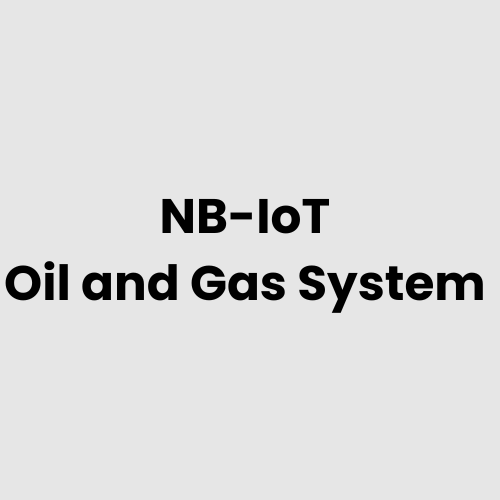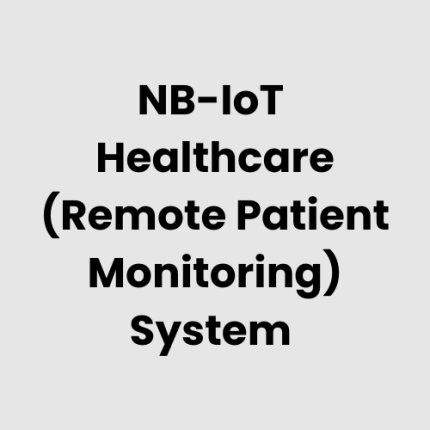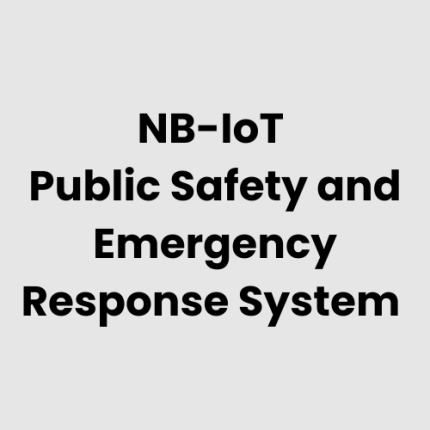Description
NB-IoT Enabled Oil and Gas IoT System
Technical Architecture
GAO Tek’s NB-IoT Enabled Oil and Gas IoT System is a robust solution designed to improve monitoring, asset management, and predictive maintenance in the oil and gas industry. The system architecture is composed of several layers, each serving a distinct function:
- Sensor Layer:
-
- Environmental Sensors: Monitor conditions such as pressure, temperature, flow rate, and gas composition in pipelines, reservoirs, and refineries.
- Equipment Health Monitoring Sensors: Track the status and operational efficiency of critical machinery, including pumps, compressors, and engines.
- Geospatial Sensors: Provide geolocation data for assets and personnel, facilitating asset management and personnel safety.
- Connectivity Layer:
-
- NB-IoT Gateways: These low-power, wide-area network (LPWAN) gateways ensure seamless communication between the field sensors and cloud or local servers.
- Edge Computing Layer:
- Devices located near the sensors process time-sensitive data locally, allowing immediate actions in response to urgent operational conditions.
- Cloud Data Management Layer:
- Collected data is aggregated and stored on a cloud platform for further analysis, reporting, and decision-making.
- Analytics and Visualization Layer:
- Provides intuitive dashboards for operators, enabling real-time monitoring and predictive insights for maintenance and safety management.
List of Hardware
- Environmental Sensors:
-
- Pressure, temperature, and flow sensors for pipeline and reservoir monitoring.
- Gas composition sensors for detecting hazardous gases like methane or hydrogen sulfide.
- Equipment Monitoring Devices:
- Vibration, acoustic, and wear-and-tear sensors for critical machinery.
- Condition monitoring sensors for pumps, valves, and compressors.
- Geospatial Sensors:
- GPS and RFID tags for asset tracking and personnel safety.
- NB-IoT Gateways:
- Low-power devices that collect sensor data and transmit it via NB-IoT to the cloud or local server.
- Edge Computing Devices:
- Processors for local data processing, allowing for real-time decision-making and reducing dependency on cloud services.
- Centralized Control Systems:
- Control hubs that centralize data from all assets and sensors, providing operators with real-time control and monitoring capabilities.
- Wearables for Worker Safety:
- IoT-enabled wearable devices that monitor worker vitals and environmental exposure, enhancing safety in hazardous environments.
Physical Placement Considerations
- Environmental Sensors:
- Sensors are placed along pipelines, in refineries, or on offshore rigs to monitor environmental conditions such as pressure, temperature, and gas levels.
- Equipment Monitoring Devices:
- Positioned on critical machinery like pumps, compressors, and engines to provide real-time status and health metrics.
- Geospatial Sensors:
- These are attached to assets or worn by personnel to ensure safety, location tracking, and asset management in remote or hazardous environments.
- NB-IoT Gateways:
- Located strategically throughout the oil and gas site to ensure maximum data collection and transmission coverage.
- Edge Computing Devices:
- Placed near data sources, such as in control rooms or field stations, to minimize latency and enable real-time analytics.
- Centralized Control Systems:
- Housed in operations centers or command rooms, where all data is aggregated, analyzed, and acted upon.
- Wearables for Worker Safety:
- Worn by personnel in high-risk areas, such as drilling sites or refineries, to continuously monitor their safety and health.
Hardware Architecture
- Sensor Layer:
- Incorporates a variety of environmental, geospatial, and equipment health sensors deployed throughout the site. These sensors are essential for continuous monitoring and early detection of issues.
- Connectivity Layer:
- NB-IoT Gateways act as the communication bridge between the sensor network and central servers, ensuring secure, long-range, low-power transmission of data.
- Edge Computing Layer:
- Edge devices process data locally and send only relevant information to the cloud or centralized server, enabling faster decision-making.
- Data Aggregation Layer:
- Aggregates sensor data, storing it for deeper analysis, reporting, and trend analysis in the cloud or local servers.
- Application and Analytics Layer:
- Provides real-time dashboards and predictive analytics, facilitating decision-making by operators, engineers, and safety managers.
- Security Layer:
- Ensures secure data transmission through encrypted communication channels and employs strong authentication mechanisms for system access.
Deployment Considerations
- Network Availability:
- Since oil and gas operations often occur in remote areas, ensuring stable NB-IoT coverage is critical. The deployment strategy should account for the network infrastructure in remote locations, including offshore platforms.
- Energy Efficiency:
- Devices should be energy-efficient to support continuous operation in environments with limited power sources, such as remote oil rigs.
- Scalability:
- The system should be scalable to accommodate additional sensors, devices, and locations as the oil and gas operation expands.
- Harsh Environmental Conditions:
- Equipment must be ruggedized to withstand extreme conditions such as high temperatures, corrosion from chemicals, and physical wear from mining or drilling activities.
- Data Privacy and Compliance:
- Ensure all systems adhere to industry regulations regarding data privacy and security, especially when dealing with sensitive operational data.
- Integration with Legacy Systems:
- The IoT solution must integrate smoothly with existing oil and gas operational technologies and IT systems to avoid disruption.
- Maintenance and Support:
- Regular maintenance schedules and support systems are essential for ensuring the longevity and reliability of the IoT system in an environment that may be difficult to access.
List of Relevant Industry Standards and Regulations
- ISO 9001 – Quality management systems
- ISO 14001 – Environmental management systems
- IEC 61508 – Functional safety of electrical, electronic, and programmable electronic safety-related systems
- ISO/IEC 27001 – Information security management
- API 570 – Piping inspection standard
- API 653 – Tank inspection standard
- OSHA regulations – Occupational health and safety standards
- NFPA 70 – National Electrical Code
- ATEX – Equipment for explosive atmospheres
Local Server Version
The NB-IoT Enabled Oil and Gas IoT System can be deployed with a local server to provide the following benefits:
- Data Processing:
- On-site processing of critical data reduces the dependence on external networks, allowing faster decision-making in real-time.
- Improved Data Security:
- By storing sensitive data locally, companies can enhance security and comply with strict data privacy regulations.
- Reliability:
- In areas with intermittent or no connectivity to the cloud, a local server ensures continuous system functionality.
- Customization:
- The local server version allows for tailored configurations, offering greater control over the system to meet specific operational needs.
Cloud Integration and Data Management
- Remote Monitoring and Control:
- Cloud integration allows for real-time remote monitoring, enabling operators to access key performance metrics from any location.
- Predictive Maintenance:
- Data collected from various sensors is analyzed in the cloud using advanced analytics and machine learning to predict equipment failures before they occur, reducing downtime and increasing efficiency.
- Centralized Data Storage:
- All sensor and operational data is aggregated in the cloud, providing a centralized, scalable repository for historical analysis and long-term storage.
- Data Security:
- The system employs high levels of encryption and data protection to ensure secure transmission and storage of sensitive information.
- Advanced Analytics and Reporting:
- Cloud-based analytics tools help operators and management generate insights from the data, providing comprehensive reports on performance, safety, and operational efficiency.
GAO Case Studies of NB-IoT Enabled Oil and Gas IoT System
USA Case Studies
- Houston, Texas
In Houston, oil and gas companies have adopted NB-IoT to monitor pipeline conditions, ensuring early detection of leaks or blockages. GAO Tek’s technology provides real-time data, enhancing operational efficiency and reducing the risk of environmental damage. Learn about pipeline monitoring. - Dallas, Texas
In Dallas, NB-IoT solutions are used to monitor and track oil rigs’ vital signs, including pressure and temperature. GAO Tek’s system offers real-time insights, enabling faster decision-making and reducing the risk of operational interruptions. Explore IoT in oil rigs. - Bakersfield, California
Oil fields around Bakersfield utilize NB-IoT sensors to manage well production. GAO Tek’s solutions help track production data, optimize energy usage, and reduce downtime, ensuring that oil extraction processes are both efficient and cost-effective. Learn about well management. - Denver, Colorado
In Denver, NB-IoT technology is implemented to monitor energy consumption across multiple oil and gas facilities. GAO Tek’s solution enables real-time monitoring and allows for energy optimization, reducing operational costs and environmental impact. Discover more on energy optimization in oil. - Anchorage, Alaska
In Anchorage, remote oil and gas exploration sites benefit from NB-IoT technology, which tracks equipment and environmental conditions. GAO Tek’s system provides real-time data, improving safety, reducing downtime, and ensuring compliance with regulatory standards. Learn about remote monitoring. - New Orleans, Louisiana
New Orleans-based oil platforms use NB-IoT to continuously monitor critical equipment such as pumps and valves. GAO Tek’s technology enables predictive maintenance, improving equipment longevity and minimizing costly emergency repairs. Explore oil platform IoT applications. - Tulsa, Oklahoma
In Tulsa, NB-IoT enables real-time monitoring of oil refinery systems, including pressure and flow rates. GAO Tek’s IoT solutions ensure operational efficiency and safety by alerting operators to potential issues before they escalate. Find out more about refinery monitoring. - Corpus Christi, Texas
Corpus Christi’s oil terminals leverage NB-IoT technology to monitor inventory and track the movement of oil and gas products. GAO Tek’s solution streamlines logistics and ensures accurate reporting, improving operational efficiency and reducing waste. Learn about oil terminal management. - Bismarck, North Dakota
In Bismarck, NB-IoT is used for monitoring storage tanks at oil fields. GAO Tek’s IoT system ensures accurate data on tank levels and leakage detection, preventing loss of valuable resources and improving overall security. Explore tank monitoring. - Detroit, Michigan
Detroit’s oil and gas facilities deploy NB-IoT to monitor water injection systems, optimizing water usage for hydraulic fracturing. GAO Tek’s solutions enable operators to track water flow in real time, improving operational efficiency and minimizing environmental impact. Discover more about fracking monitoring. - Fort Worth, Texas
In Fort Worth, NB-IoT systems are used to monitor gas compressors, helping to track fuel usage, pressure levels, and operational efficiency. GAO Tek’s solution provides valuable insights, contributing to enhanced system performance and reduced downtime. Learn about gas compression systems. - Los Angeles, California
Oil refineries in Los Angeles integrate NB-IoT for monitoring emissions, improving compliance with environmental regulations. GAO Tek’s system provides real-time alerts when emissions exceed set thresholds, enabling timely corrective actions. Explore emission monitoring in oil. - Pittsburgh, Pennsylvania
Pittsburgh-based oil companies leverage NB-IoT to remotely monitor pressure and flow rates in deepwater drilling operations. GAO Tek’s technology improves safety, reduces operational costs, and enhances real-time decision-making. Discover more about deepwater drilling. - Phoenix, Arizona
In Phoenix, NB-IoT solutions are used to monitor energy production and equipment status at solar-assisted oil extraction sites. GAO Tek’s systems provide real-time data, optimizing energy use and reducing operational costs. Learn more about renewable energy in oil extraction. - Chicago, Illinois
Chicago’s gas storage facilities utilize NB-IoT for monitoring pressure and tank conditions. GAO Tek’s IoT technology offers real-time insights that enable the detection of leaks and prevent dangerous situations, ensuring safety and reliability. Explore more on gas storage solutions.
Canada Case Studies
- Calgary, Alberta
In Calgary, oil and gas operators use NB-IoT to monitor pipeline infrastructure, tracking flow rates, temperature, and pressure. GAO Tek’s solution provides real-time diagnostics, ensuring that potential failures are addressed before they lead to significant disruptions. Learn about pipeline management.
- Edmonton, Alberta
Edmonton’s oil fields use NB-IoT technology for well monitoring and equipment status updates. GAO Tek’s IoT solutions help enhance productivity by reducing
Navigation Menu for NB-IoT
Navigation Menu for IoT
- LORAWAN
- Wi-Fi HaLow
- Z-WAVE
- BLE & RFID
- NB-IOT
- CELLULAR IOT
- GPS IOT
- IOT SENSORS
- EDGE COMPUTING
- IOT SYSTEMS
Our products are in stock and can be shipped anywhere in the continental U.S. or Canada from our local warehouse. For any further information, please fill out this form or email us.
We are actively looking for partners who are like us located in the U.S. and Canada. For more information on partnering with GAO, please visit Partner with GAO Tek Inc. It lists various ways to partner with GAO, such as OEM Partnerships, Technology Integration, Distribution and Reselling Opportunities, Presenting at the Leading Event Tek Summit, Joint R&D Projects, Training and Consulting Services, Industry-Specific Collaborations, Research and Academic Partnerships.



